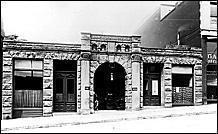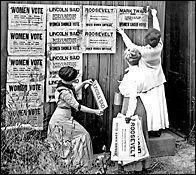1851
Nov. 13: Settlers, led by Arthur Denny, arrive at Alki Point.
Nov. 28: Charles Terry opens area's first store.
1852
March 31: David "Doc" Maynard arrives. He is credited with naming Seattle after his friend Chief Sealth, leader of the Duwamish and Suquamish tribes.
April 3: Denny party moves across Elliott Bay.
Dec. 22: King County incorporated.
1853
March 26: Henry Yesler opens his sawmill, the first on the Puget Sound.
May 23: Maynard files plats with streets based on compass points, not parallel to the shoreline as Denny and Carson Boren had done. This results in a permanent mismatch at Yesler Way, where two halves of town meet.
1855
Jan. 22: Point Elliott Treaty, which cedes much of the Native American land in Western Washington to the U.S. government, is signed.
1856
Jan. 26: The Battle of Seattle is fought. Seattle residents fire muskets at attacking Indians, upset over attempts to relocate them. The sloop Decatur fires its cannon, routing the Indians. Two settlers are killed.
1858
Feb. 18: Chief Leschi of the Nisquallies is hanged after being found guilty of leading an ambush in which two federal volunteers were killed in 1855.
1860, Military Road from Fort Vancouver to Seattle is completed, the first road connecting Seattle to other Western Washington cities.
1861
Nov. 4: Washington Territorial University — later the University of Washington — is established in downtown Seattle.
1863
Dec. 10: The Gazette, Seattle's first newspaper, is published. It evolves into the Post-Intelligencer.
1864
May 16: The Mercer girls arrive in Seattle. Asa Shinn Mercer, the UW's first teacher, traveled to New England to find wives for the men of Washington. He had intended to bring back hundreds of women but returned with far fewer.
1866
June 7: Chief Sealth dies.
1869
Seattle Public Library opens.
Dec. 2: Seattle incorporates.
1870
Seattle's population is 1,107.
1870
July 11: Henry Atkins is elected Seattle's first mayor.
1872
March 25: The coal route from Seattle to Newcastle is completed, the first railroad in Western Washington.
1872
Oct. 24: Seattle's first brick building erected.
1873
July 14: Northern Pacific chooses Tacoma over Seattle as terminus of transcontinental railroad.
1875
March 3: Steamship service to San Francisco begins.
1876
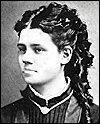 |
| 1876 First UW grad, Clara McCarty |
The first UW graduate is Clara McCarty.
Aug. 7: Seattle YMCA founded.
1878
Seattle Malting and Brewing, later Rainier Brewery, is established.
Aug. 2: Mother Joseph opens Providence Hospital, the first in Seattle, at Fifth Avenue and Madison Street.
1879
Nov. 24: Squire's Opera House on First Avenue South between Main and Washington streets is the city's first theater.
1880
Seattle's population is 3,533.
1882
December: The first trans-Pacific steamship departs from Seattle, the first step in the city's ambition to become the gateway to the Pacific Rim.
1884
Sept. 23: The first horse-powered streetcar line is established.
1886
Feb. 6: Mob forces 350 Chinese to the docks for "deportation.'' Soldiers and sheriff's deputies intervene and five men are wounded.
1888
Dec. 24: The City of Seattle is the first regularly scheduled ferry on Puget Sound.
1889
The Bon Marché opens.
March 31: The first electric-trolley line begins.
June 6: The Great Seattle Fire leaves more than 25 blocks of downtown Seattle in smoldering ruins. But there were no confirmed deaths.
Sept. 21: Business and political leaders form the Washington National Building, Loan and Investment Association to help rebuild the city. It is the precursor to Washington Mutual.
1890
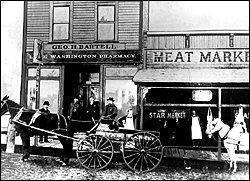 |
| 1890 George Bartell's first drug store. |
Seattle's population is 42,837.
The Frederick & Nelson store opens. It becomes the city's premier department store for 101 years, until closing in 1992.
George Bartell buys his first drugstore.
Jan. 7: The first transcontinental train arrives in Seattle.
1895
Sept. 4: First classes begin at the present site of the UW.
1896
Aug. 10: Col. Alden Blethen buys The Seattle Daily Times.
1897
July 17: The steamship Portland docks in Seattle loaded with gold, igniting the Klondike Gold Rush. Business generated by supplying prospectors brings great gains in wealth and population to the city.
1898
Oct. 21: Seattle College opens, predecessor to Seattle University.
1899
Dec. 28: City buys Guy Phinney's Woodland Park estate and its menagerie (now the zoo).
1900
Seattle's population is 80,671.
Feb. 9: Fort Lawton is established on Magnolia Bluff.
1901
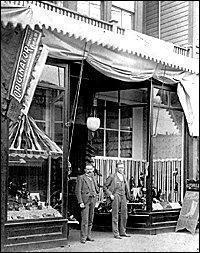 |
| 1901 Wallin & Nordstrom shoe store. |
Opening of Wallin & Nordstrom shoe store, the forerunner of the retail giant Nordstrom.
1902
Sept. 25: Interurban rail service begins.
1903
Dec. 29: The Seattle Symphony performs for the first time.
1905
Feb. 11: William Pigott incorporates Seattle Car Manufacturing, which in 1972 becomes PACCAR, now one of the world's largest manufacturers of custom-made heavy-duty trucks.
1906
The King Street Station opens to serve the Great Northern and Northern Pacific railroads.
1907
Children's Hospital opens.
John McLean builds world's first gasoline service station at Holgate Street and Western Avenue.
Ballard, West Seattle, Columbia City and Rainier Beach annexed.
Aug. 17: Pike Place Market opens.
Aug. 28: James Casey, 19, and Claude Ryan start American Messenger, which becomes United Parcel Service.
1909
June 1: The Alaska-Yukon-Pacific Exposition opens on the site now occupied by the UW.
1910
Seattle's population is 237,194.
Laurelhurst and Georgetown annexed.
Nov. 8: Washington state grants women the right to vote. In 1854, a proposal by Arthur Denny to enfranchise women had failed by one vote in the territorial legislature. Seattle women won the right to vote in 1883, but that was ruled unconstitutional by the Territorial Court in 1887.
1911
Feb. 7, Mayor Hiram Gill is recalled. Gill sought to preside over a city tolerant of gambling and prostitution.
Sept. 5: Port of Seattle established.
May 20: Union Station opens to serve the Union Pacific railroad.
1913
July 17: A confrontation between sailors and an Industrial Workers of the World speaker during Seattle's Potlatch Days festival leads to two days of rioting and fistfights. No deaths are reported, but injuries and property damages are extensive.
 |
| 1913 First automobile ferry, the Leschi, crosses Lake Washington. |
Dec. 27: The Leschi, the first automobile ferry, makes its first trip across Lake Washington.
1914
The Cornish School, specializing in the arts, is founded.
July 4: Smith Tower opens.
1916
June 1: Longshoremen strike in major ports along the West Coast, including Seattle. The strike is marred by violence and property destruction and is not settled until October.
1917
March 26: The Seattle Metropolitans hockey team wins the Stanley Cup.
1917
May 8: Lake Washington Ship Canal, including the Hiram Chittenden Locks, is completed, connecting Shilshole Bay, Lake Union and Lake Washington.
May 9: Boeing Airplane established.
1918-1919
A flu epidemic kills 1,600 in Seattle.
1919
Eddie Bauer goes into business.
Feb. 6: First general strike in the nation's history begins in Seattle when 60,000 workers stay home. The strike ends Feb. 11.
1920
Seattle's population is 315,312.
1920
May: The nation's first sanitary landfill is established on Queen Anne Hill.
Dec. 27: The Hearst company takes over the Seattle Post-Intelligencer.
1924
Dec. 6: The Olympic Hotel opens.
1926
Don Ibsen, a senior at Roosevelt High School, screws a pair of tennis shoes onto a cedar board and becomes one of the co-inventors of water-skiing.
Fisher's Blend Station corporation is formed, and KOMO-AM radio station goes on the air.
May 9: Bertha Landes is elected mayor, first woman mayor in any major U.S. city.
1927
Jan. 28: Boeing secures the Chicago-San Francisco air-mail contract and forms United Air Lines.
1928
Thomas Edison flips a switch in West Orange, N.J., and turns on Seattle's new electric street-lighting system.
Burton and Florence Bean James start the Seattle Repertory Playhouse.
July 26: Boeing Field opens.
Dec. 30: The Interurban to Tacoma ends service.
1930
Seattle's population is 365,583.
Dec. 10: The Denny Regrade is completed. Begun in 1898, this was a massive project to level Denny Hill and surrounding area, one of several similar works around the city.
1932
Feb. 27: The Aurora Bridge is dedicated, the first major highway bridge built in Seattle.
1933
June 23: Seattle Art Museum opens in Volunteer Park.
1934
The Washington Park Arboretum is established.
May 9: A West Coast waterfront strike, in which several people are killed, begins. It lasts until July 31. The International Longshoreman's Association wins recognition in Seattle.
1936
Aug. 19: Newsroom members of the American Newspaper Guild strike the Post-Intelligencer.
1938
July 29: Ivar Haglund opens a fish-and-chips stand at Pier 54. This expands into Ivar's Acres of Clams and an empire of seafood eateries.
1939
Lloyd and Mary Anderson form a buying co-op in Seattle so members can find obscure climbing equipment. This becomes REI (Recreational Equipment Incorporated).
Dec. 2: Yesler Terrace becomes the first racially integrated public housing in United States.
1940
Seattle's population is 368,302.
June 5: The Lake Washington Floating Bridge opens, connecting Seattle with Mercer Island and the Eastside.
1942
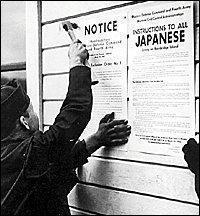 |
| 1942 Japanese Americans ordered out of Seattle. |
April 21: Japanese Americans are ordered to evacuate Seattle. More than 12,000 U.S. citizens of Japanese ancestry from King County were held in inland "relocation centers" during World War II.
1944
Aug. 14: African-American soldiers riot at Fort Lawton and lynch an Italian prisoner of war. Twenty-three men are convicted and 13 acquitted in the riot, attributed to racial tension based on unfair treatment of black soldiers.
1945
Dec. 22: Group Health Cooperative formed.
1947
Dorothy Stimson Bullitt buys KEVR-FM, the first piece of the KING broadcasting empire.
1949
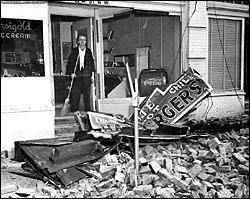 |
| 1949 7.1-magnitude earthquake hits Seattle. |
Jan. 22: UW fires three professors for suspected Communist ties after an investigation by a committee formed by the Legislature in 1947 and chaired by Rep. Albert Canwell, a freshman Republican from Spokane.
April 13: A 7.1-magnitude earthquake kills seven in Seattle. The quake only lasted 20 seconds, but repairs went on for years.
July 9: Seattle-Tacoma International Airport opens.
1950
Seattle's population is 467,591.
April 21: Northgate Mall opens, one of the earliest suburban shopping malls in the United States.
August: First Seafair celebration held.
1951
June 1: Responding to public pressure for accountability, the state takes over ferry operations from Black Ball.
1953
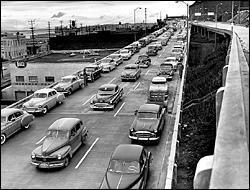 |
| 1953 Alaskan Way Viaduct completed. |
Voters agree to annexations that extend Seattle to North 145th Street.
April 4: Alaskan Way Viaduct completed.
July 16: The Newspaper Guild strikes The Seattle Times, shutting down the paper for 94 days.
1954
Jan. 28: Dick's Drive-In opens in Wallingford.
July 15: A Boeing 707, the first successful passenger jet, takes its first flight.
1958
Sept. 9: Metro established. Restricted to sewers and water cleanup at first, Metro is expanded to include mass transit in 1972. In 1992, Metro merges with King County.
1960
Seattle's population is 557,087.
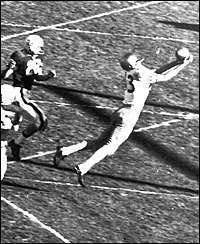 |
| 1960 Huskies win Rose Bowl. |
Dr. Belding Scribner teams up with fellow UW researchers Dr. Albert Babb and technician Wayne Quinton to perfect the kidney-dialysis process.
Jan. 1: The UW football team wins its first Rose Bowl.
1961
Bill Kirschner (later to form K2 on Vashon Island) invents the fiberglass snow ski.
March 17: Wing Luke is elected to City Council, the first Chinese American elected to a major public office in the United States.
1962
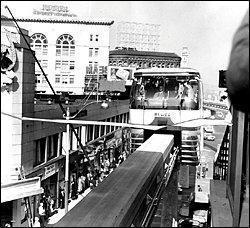 |
| 1962 World's Fair. |
April 21: The World's Fair opens, leaving as part of its legacy the Space Needle, Monorail and many of Seattle Center's buildings.
June 20: Dave Beck, a Seattle trucker driver who rose to become head of the powerful Teamsters union, begins a two-year prison term for tax evasion. He later is pardoned.
Oct. 12, 1962: A Columbus Day windstorm, the most savage in West Coast history, damages 53,000 homes. Seven people are killed in Washington., 35 in Oregon.
1963
Aug. 28: The Evergreen Point Floating Bridge opens.
1965
April 29: An earthquake, which registered between 6.5 and 7 on the Richter scale, kills eight people from either falling debris or heart attacks.
1966
Dec. 31: Boeing is awarded the contract to build the super-sonic transport, the SST.
1967
Jan. 31: Interstate 5 is completed from Tacoma to Everett.
Oct. 13: Seattle's new professional basketball team, the Supersonics, plays its first game.
1968
Feb. 13: Voters approve $40 million of "Forward Thrust" bonds to build the Kingdome, the Aquarium, youth centers and highways. But voters reject a $385 million mass-transit proposal.
1969
Jan. 26: Edwin Pratt, 38, one of Seattle's most respected black leaders, is fatally shot at his Richmond Highlands home. The case has not been solved.
Feb. 9: The Boeing 747 takes its first test flight.
March 28: The 50-story Seafirst Building is completed. It is the first Seattle building taller than Smith Tower.
April 11: Seattle's new professional baseball team, the Pilots, begins its first and only season at Sick's Stadium. The team moves to Milwaukee the next year.
Oct. 8: Police Chief Frank Ramon resigns amid a gambling and corruption scandal.
1970
Seattle's population is 530,831.
Feb. 17: Protesters pelt the Federal Courthouse with paint and rocks after the "Chicago Seven" are cited for contempt of court in their trial stemming from demonstrations at the 1968 Democratic Convention in Chicago. The accused leaders of the protest, dubbed the "Seattle Seven," are indicted for conspiracy, but the case ends in a mistrial.
March 7: Medic One begins. The mobile paramedic units pioneer on-site cardiac care.
March 8: About 100 Indian activists attempt to occupy the abandoned Fort Lawton. They "claimed" Fort Lawton under a provision in an 1865 treaty promising reversion of surplus military lands to the original owners. As a result of the protests, the Daybreak Star Center is formed in what becomes Discovery Park.
May 5: More than 3,000 anti-war protesters block southbound Interstate 5 traffic before exiting at Roanoke.
May Pioneer Square designated city's first historic district.
Dec. 3: Congress kills the SST project, and the "Boeing Bust" reaches its peak. Boeing employment in the area drops below 38,000 from 95,000 in 1968.
1971
April: Starbucks opens its first cafe.
July 27: A grand jury issues 28 indictments in a police bribery scandal. Eventually, there were 54 indictments but only two convictions.
Sept. 3: The Labor Day weekend is kicked off with Festival '71, which becomes known as Bumbershoot, the annual music-and-arts festival at Seattle Center.
Nov. 2: Voters save Pike Place Market, thwarting an eight-year effort to replace it with offices, hotels and parking garages.
Nov. 24: A man, known only by the pseudonym Dan or D.B. Cooper, hijacks a Northwest Airlines flight from Portland to Seattle. After collecting a $200,000 ransom and four parachutes in Seattle, he orders the pilots to fly to Mexico. As the plane flies over Southwest Washington, he jumps out. About $5,800 of the money is found years later, but neither Cooper nor the rest of the money has been found.
1972
Oct. 11: Chicano activists occupy the Beacon Hill School, which becomes the site of El Centro de la Raza, a clearinghouse of services for the local Hispanic community.
1975
April 4: Micro-Soft (the hyphen was removed in 1976), the software giant, is founded by Bill Gates and Paul Allen. In 1978, it moves from Albuquerque to Bellevue, bringing jobs and wealth to the Seattle area.
1976
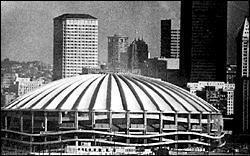 |
| 1976 Kingdome opens. |
July 1975: The Seattle Opera stages Richard Wagner's "Der Ring des Nibelungen" for the first time. March 27: The Kingdome opens. On Sept. 12, Seattle's new professional football team, the Seahawks, plays its first regular-season game.
March 31: Seattle Weekly begins publication.
1977
April 6: Seattle's new professional baseball team, the Mariners, plays its first game.
May 20: Seattle Aquarium opens.
1978
June 11: Freighter Chavez hits the West Seattle Bridge and puts the span out of commission for seven years.
Sept. 29: Seattle becomes the first big city in the United States to implement a busing program without being required to do so by the courts.
1979
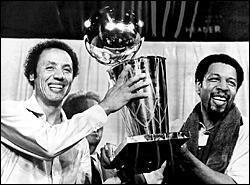 |
| 1979 Sonics win NBA Championship. |
June 1: The Supersonics win the NBA championship.
1980
Seattle's population is 493,846.
1982
July 15: The body of Wendy Lee Coffield, the Green River killer's first victim, is found. Forty-nine homicides have been attributed to this unknown serial killer.
Aug. 11: The first pint of Redhook Ale is sold in Seattle, kicking off the microbrew craze.
1983
Feb. 18: Three Hong Kong immigrants enter the Wah Mee Club, a gambling parlor in Seattle's Chinatown International District, and kill 13 people, the worst mass murder in state history. The three men were convicted of murder.
May 23, 1983: Joint Operating Agreement begins between the Post-Intelligencer and The Times. Under the agreement brokered through the Justice Department, The Times manages printing, advertising, circulation and most other commercial operations for both papers, while the news operations of the two papers remain editorially independent. It is amended in 1999 to allow The Times to publish a morning edition.
Sept. 15: The first Costco discount warehouse opens on Fourth Avenue South.
1985
March 2: The 76-story Columbia Center (Bank of America Tower) is completed. It becomes the city's tallest building. The towering structure is the pride of developer Martin Selig, who is credited with remaking Seattle's skyline.
1988
April 8: The Metro bus tunnel is completed under downtown Seattle.
June 23: Washington State Trade and Convention Center completed.
1989
Jan. 24: Serial killer Ted Bundy executed in Florida. Before his death, the Tacoma-raised killer confesses to 20 murders committed between 1973 and 1978, 11 of them in Washington.
1990
Seattle's population is 516,259.
July 20: Seattle hosts the Goodwill Games, an alternative to the Summer Olympics, which media mogul Ted Turner thought had fallen hostage to politics.
Nov. 25: The Interstate 90 floating bridge sinks in a storm.
1991
Dec. 5: Seattle Art Museum moves to a new building downtown. The Volunteer Park building becomes the Seattle Asian Art Museum.
1993
Jan. 20: Six people die, 750,000 homes and businesses lose power and 167 homes are destroyed in the Puget Sound's Inaugural Day storm.
1995
Sept. 28: The U.S. Navy leaves Sand Point, a naval air station since 1920. The National Oceanic and Atmospheric Administration gets 100 acres for its Western headquarters, and the remaining 156 acres become Magnuson Park.
Jan. 5: Four Seattle firefighters die in the Pang warehouse fire. Martin Pang, son of the owners, eventually pleads guilty to manslaughter and is sentenced to 35 years in prison.
1996
Nov. 5: Sound Transit is approved by voters. The agency begins the planning and operation of commuter rail trains and express bus service. A light-rail line from SeaTac to the University District also is planned.
1997
June 17: Voters approve funding for the Seahawks' new stadium.
1998
Sept. 12: Benaroya Hall opens.
Nov. 27: A Metro bus plunges 50 feet off the Aurora Bridge when passenger Silas Cool fatally shoots Metro driver Mark McLaughlin and then fatally shoots himself. One other passenger is killed and 33 are injured.
Nov. 28: Popular Seattle schools Superintendent John Stanford dies from complications of leukemia.
1999
July 15: Safeco Field, new home of the Mariners, opens. King County voters had rejected a stadium-funding proposal in 1995, but when the Mariners threatened to relocate, Gov. Gary Locke called a special session of the state Legislature, which approved money for construction.
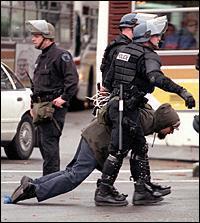 |
| 1999 WTO riots in downtown Seattle. |
Nov. 29-Dec. 3: The World Trade Organization meeting deteriorates into rioting, police confrontations, the closing of downtown and a curfew. Nearly 600 people are arrested, but most of the charges are eventually dropped.
2000
Seattle's population is 563,374.
Jan. 31: Alaska Flight 261 crashes into the Pacific Ocean, killing 88, many from Seattle.
June 23: Experience Music Project, Paul Allen's homage to rock 'n' roll music, opens.
March 26: The Kingdome is imploded to make way for the new football stadium.
Nov. 19: The Newspaper Guild strikes at The Times and Post-Intelligencer. Each paper publishes during the strike, which ends after 37 days at the P-I and 49 days at The Times.
2001
Feb. 27: Mardi Gras celebrations in Pioneer Square deteriorate into rioting. One person is killed.
Feb. 28: A magnitude-6.8 earthquake rattles the Puget Sound area, causing more than $1 billion in damage.
Sept. 4: Boeing moves its corporate headquarters to Chicago.
 Tuesday, November 13, 2001 - 12:00 a.m. Pacific
Tuesday, November 13, 2001 - 12:00 a.m. Pacific